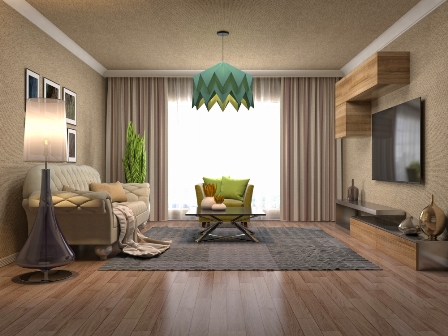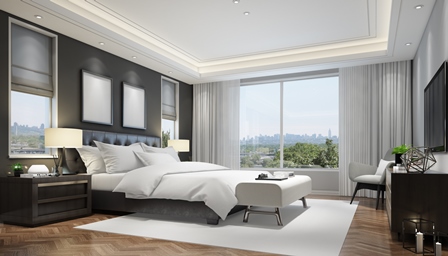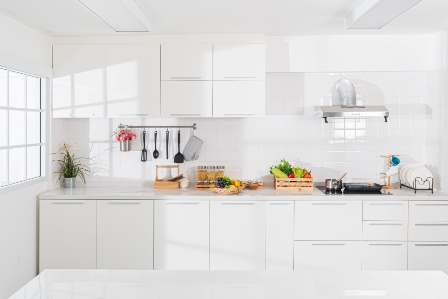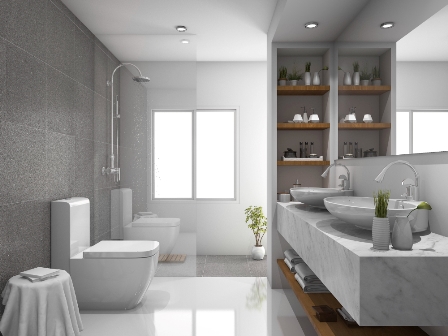Are you dreaming of transforming your house into a beautiful home? Look no further! At Home with Keki, we are passionate about interior design and believe that creating a beautiful space is the key to turning a house into a warm and inviting home. In this article, we will explore the world of interior design, its importance, key elements, and tips for designing different spaces within your home.
1. The Influence of Keki
Keki, an influential interior design blogger, has garnered a significant following due to her unique approach to design. Through her blog and social media channels, she shares her expertise, insights, and creative ideas with a global audience. Keki’s signature style is characterized by a harmonious blend of modern and traditional elements, creating spaces that exude elegance and warmth.
2. The Role of Interior Design in Creating Beautiful Homes
2.1 Importance of a Well-Designed Home
A well-designed home goes beyond aesthetics; it creates an environment that reflects your personality, enhances functionality, and promotes a sense of well-being. It is a space where you can truly be yourself and find comfort after a long day. Interior design plays a crucial role in achieving these goals by harmonizing elements such as color, furniture, lighting, and accessories.
2.2 Understanding the Basics of Interior Design
Before diving into the world of interior design, it’s essential to understand its fundamental principles. Interior design is the art of creating harmonious spaces by utilizing various design elements. These elements include color, furniture, lighting, texture, and accessories. By carefully combining these elements, interior designers can transform a plain room into a visually stunning and functional space.
3. Key Elements of Interior Design
3.1 Color Palette and Mood
One of the primary considerations in interior design is choosing the right color palette. Colors have the power to evoke emotions and set the mood of a room. Warm colors like red and orange create a cozy and energetic atmosphere, while cool colors such as blue and green promote relaxation and tranquility. By selecting the appropriate colors for each room, you can enhance its intended purpose and create a harmonious environment.
3.2 Furniture and Layout
Furniture and layout are vital components of interior design. The choice of furniture should be based on the room’s function and the overall style you want to achieve. Whether it’s a sleek modern sofa or a vintage armchair, each piece contributes to the overall aesthetics of the space. Additionally, the arrangement of furniture should promote easy movement and create a balanced layout that maximizes both functionality and visual appeal.
3.3 Lighting and Ambiance
Proper lighting is crucial in interior design as it affects the mood and ambiance of a room. Natural light is highly desirable, but artificial lighting also plays a significant role. Different lighting fixtures, such as chandeliers, table lamps, arched floor lamp and recessed lights, can be used to create a specific atmosphere. Dimmers can provide flexibility, allowing you to adjust the lighting intensity based on your needs or the time of day.
3.4 Texture and Materials
Texture and materials add depth and interest to a room. From smooth silk curtains to rough textured walls, incorporating various textures can create visual contrast and tactile experiences. Likewise, the choice of materials, such as wood, glass, metal, or fabric, contributes to the overall style and character of the space. Mixing different textures and materials adds richness and complexity to the design.
3.5 Accessories and Décor
Accessories and décor are the finishing touches that bring a room together. These include artwork, rugs, curtains, throw pillows, and decorative objects. Accessories allow you to infuse your personality and style into the space, making it truly unique. However, it’s important not to overcrowd the room with too many accessories, as it can disrupt the visual balance and create a cluttered appearance.
4. Designing Different Spaces within a Home
Every room in a home has its purpose and should be designed accordingly. Here are some tips for designing different spaces within your home:
4.1 Living Room
The living room is often the focal point of a home, where you entertain guests and spend quality time with family. Consider comfortable seating arrangements, a focal point such as a fireplace or TV, and a layout that encourages conversation. Choose colors and accessories that reflect your personal style while keeping the room inviting and functional.

4.2 Bedroom
The bedroom is your personal sanctuary, a place to relax and rejuvenate. Opt for a soothing color palette and comfortable bedding. Create storage solutions that keep clutter at bay, ensuring a peaceful and organized space. Balance functionality with aesthetics by selecting furniture that combines style and practicality.

4.3 Kitchen
The kitchen is the heart of any home. Design it to be functional, efficient, and visually appealing. Consider the work triangle (sink, stove, and refrigerator) when planning the layout. Choose durable materials for countertops and cabinetry that withstand daily use. Incorporate proper lighting and storage solutions to enhance usability and create a welcoming atmosphere.

4.4 Bathroom
The bathroom should be a serene oasis where you can unwind and pamper yourself. Select calming colors and materials that promote relaxation. Pay attention to lighting, as it affects both functionality and ambiance. Incorporate storage solutions to keep toiletries organized and minimize clutter.

4.5 Home Office
As more people work remotely, home offices have become essential. Design an office space that is comfortable, functional, and promotes productivity. Choose a desk and chair that provide ergonomic support. Ensure proper lighting and create storage solutions that keep documents and supplies within reach. Personalize the space with inspiring artwork or plants to enhance creativity and focus.

5. Balancing Functionality and Aesthetics
When designing your home, it’s essential to strike a balance between functionality and aesthetics. Consider the following factors:
5.1 Designing for Practicality
While aesthetics are crucial, functionality should not be overlooked. Design each space to serve its intended purpose effectively. Incorporate storage solutions, consider traffic flow, and select furniture that meets your needs. A well-designed home should be both visually appealing and practical to live in.
5.2 Infusing Personal Style and Taste
Your home should reflect your personal style and taste. Infuse elements that resonate with you, whether it’s a specific color palette, artwork, or furniture style. This personal touch adds character and makes the space feel truly yours.
6. Tips for Creating a Beautiful Home with Interior Design
Designing a beautiful home can be a rewarding process. Here are some tips to help you get started:
6.1 Research and Inspiration
Before diving into interior design, conduct thorough research and gather inspiration. Browse design magazines, visit websites, and explore social media platforms to discover different styles and trends that appeal to you. Create mood boards or Pinterest boards to collect ideas and visualize your desired aesthetic.
6.2 Budgeting and Planning
Set a budget for your home design project and plan accordingly. Determine which rooms or areas require immediate attention and allocate your resources accordingly. Break down your budget into categories such as furniture, accessories, and professional services. This will help you stay on track and make informed decisions throughout the process.
6.3 Hiring a Professional Interior Designer
If you feel overwhelmed or lack the time and expertise, consider hiring a professional interior designer. They can provide valuable insights, guide you through the design process, and help you achieve your vision within your budget. An experienced designer will have access to resources, contractors, and suppliers, saving you time and ensuring a cohesive design.
6.4 DIY Home Design Projects
If you enjoy hands-on projects and have a knack for creativity, consider DIY home design projects. From painting walls to refurbishing furniture, there are numerous ways to personalize your space while adding a unique touch. DIY projects allow you to save money and unleash your creativity.
7. FAQs
Here are answers to some frequently asked questions about Home with Keki Interior Design Blogger
Interior design plays a crucial role in creating a beautiful home as it harmonizes various elements to enhance aesthetics, functionality, and personal expression.
Key elements of interior design include color palette and mood, furniture and layout, lighting and ambiance, texture and materials, and accessories and décor.
Designing different spaces within your home requires considering the purpose of each room, selecting appropriate colors and furniture, and creating layouts that optimize functionality and visual appeal.
To balance functionality and aesthetics, design each space with its intended purpose in mind, incorporate storage solutions, and infuse your personal style and taste into the design.
Hiring a professional interior designer can be beneficial if you feel overwhelmed or lack the time and expertise to design your home. They can provide guidance, access to resources, and help you achieve your vision within your budget.
8. Conclusion
Creating a beautiful home is an art that requires a balance of functionality, aesthetics, and personal style. By understanding the principles of interior design, considering the key elements, and designing each space with purpose, you can transform your house into a welcoming and visually stunning home. Whether you choose to embark on the journey yourself or seek professional guidance, the result will be a space that reflects your personality and brings you joy for years to come.

